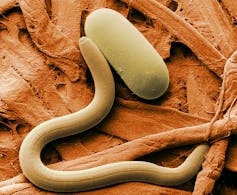Nothing is more certain in life than death. As we age, we become much more susceptible to major diseases like cancer and heart disease because the mechanisms that help prevent them earlier in life start to fail. We wear out, become much less mobile as our muscles and joints stop working properly, and lose cognitive function as our nervous systems deteriorate. Put simply, ageing is the single biggest risk factor for death.
The process of ageing is also a relentless march towards our ultimate decline, with frailty and illness leading to a poor quality of later life for many older people. This has tremendous social and economic consequences. Who cannot be touched by the poignancy of the older person who loses their memory – the very essence of who they are – or shocked by the fact that the last five years of life cost more to the health service than the whole of the rest of the life put together?
Different animal species have wildly different lifespans, from a matter of hours to several centuries. All the characteristics common to a particular species, such as body pattern, reproductive capacity, brain size and so on, are genetically programmed. In other words, such features are defined by the genome – the sum total of all an organism’s DNA. So lifespan, like any other characteristic, must also be genetically programmed.
But which genes control lifespan? Biological ageing is extremely complex, so is it possible to single out particular genes as being causative? Well yes it is. In humans, some of the best genetic studies of ageing come from an analysis of premature ageing (progeroid) syndromes like Werner Syndrome (WS). Because of mutations in just a single gene, WS patients exhibit a wide range of age-related changes (from greying hair to cardiovascular disease and cancer) highly prematurely, with an average age of death of around 47.
Fascinating and important though the study of progeroid syndromes are, the problem is that such syndromes are very rare and, for obvious reasons, it is impossible to experiment and probe the function of individual human genes in a systematic way. It is perfectly feasible to study human cells in culture, but this cannot address gene function within a whole organism where effects on multiple cell and tissue types and whole organ systems can be monitored.
Looking at mutations

So what is the alternative? How about the nematode worm Caenorhabditis elegans? C. elegans is a 1mm long soil-dwelling nematode composed of only 1,000 cells. It has a lifespan of about three weeks, but crucially these nematodes age in ways that are biochemically and physiologically very similar to our own.
Like other so-called model organisms used in biomedical research, C. elegans is also strikingly similar to humans at a genetic level, with counterparts of 60-80% of human genes and more than a third of genes recognised as “orthologues” (derived from the same gene in their last common ancestor). C. elegans has been used for 40 years to illuminate a staggering collection of biological processes, from neuro-transmission to programmed cell death.
The strength of using C. elegans as a model system is its amenability to genetic analysis. Animals are exposed to DNA damaging agents (mutagens) and the resulting mutant animals are screened using simple observation or more sophisticated biological investigations, to select those showing characteristics that illuminate interesting biological processes.
Researchers who are interested in the genetic basis of development, for example would select mutants displaying developmental abnormalities. Muscle cells might be in the wrong place or intestinal cells could be replaced by neurons. These mutants would thus define genes that are crucial for normal development – when they go wrong there are problems.
The next trick is to work out which gene that is crucial for this process is defective in each mutant strain. Once its identity is known, the researcher could then go on to investigate how that gene worked at the molecular level.
Doubling healthy lifespan
Twenty years ago this wonderfully simple experimental approach was applied to ageing – and a crucial step was the isolation of mutants with extended lifespan. Short lifespan could be attributed to an animal that was simply “sick”, but lifespan extension must mean the genetic programme controlling it had been interfered with in some fundamental way.
The most important mutant to be isolated was the daf-2 gene. C.elegans with this mutation live twice as long as normal worms. This would be like us living up to 200 years. But not only that, the animals were found to be healthier for much longer.
By tweaking one gene, age-related diseases were all postponed in these longer-lived animals. This led researchers to postulate that animals must have the latent potential to live much longer than they normally do, turning ideas about the passive, entropic nature of ageing – caused by molecular changes and accumulation of waste products – completely on their head. Daf-2 must normally accelerate ageing in some way and so the mutant characteristic is extended lifespan.
Making hay while the sun shines
Daf-2 turned out to encode a hormone receptor similar to the insulin/insulin-like growth factor (IGF) receptor in humans, which is a protein found on cell membranes that transmits signals into the cell. When daf-2 isn’t working properly, theses signals change. Many knock-on effects on other genes act cumulatively to have large effects on ageing, and these effects were also found to be mediated by another gene called daf-16/FOXO.
The daf-2/daf-16 pathway has now, through years of detailed genetic analysis, been joined by many other genetic players and complex pathways, feedbacks and interactions have emerged.
If one were to postulate an over-arching mechanism of ageing, it would be based on the observation that many mutations that extend lifespan affect stress-response genes – those that help cells cope with stresses such as a change in temperature, or those that sense nutrients. When food is plentiful and stress levels low, these genes make hay while the sun shines by supporting growth and reproduction. But under difficult conditions they take a “things can only get better” attitude – their activities change, sparking a whole physiological shift towards cell protection and maintenance. This shift extends lifespan, a state that can be mimicked (or triggered) by mutations in genes like daf-2, which sense environmental conditions.
Put another way, daf-2 and daf-16 are part of the machinery that takes stock of prevailing environmental conditions and sets the appropriate course, either a “live fast die young” or “try to stay alive to see if things improve” approach. In daf-2 mutants the latter programme appears to be the default state, even in the absence of stress.
Human effects
Do similar genes regulate lifespan in humans? It looks like they do: mutations in the insulin receptor gene are associated with longevity in a Japanese cohort; those that impair IGF-1 receptor function are commonly seen in a populations of Ashkenazi Jewish centenarians; and FOXO genetic variants have also been linked to longevity in several populations around the world.
And going back the other way – we now know that the worm WS gene counterpart reduces worm lifespan when inactivated, just as it does in humans.
Thus the humble C. elegans worm leads the way in ageing research, just as it does by revealing secrets for so many other avenues of biological investigation. We just have to assemble the jigsaw pieces to expose the big picture.
Could this research one day be translated into drugs that slow down the ageing process? Or more importantly, could the diseases of old age be prevented, extending our healthspan? It is certainly reasonable to speculate that drugs that mimic the effects of insulin/IGF and FOXO mutations, for example, could have this effect. But there is still much left to learn about the basic biology of ageing if we are to “treat” old age.

